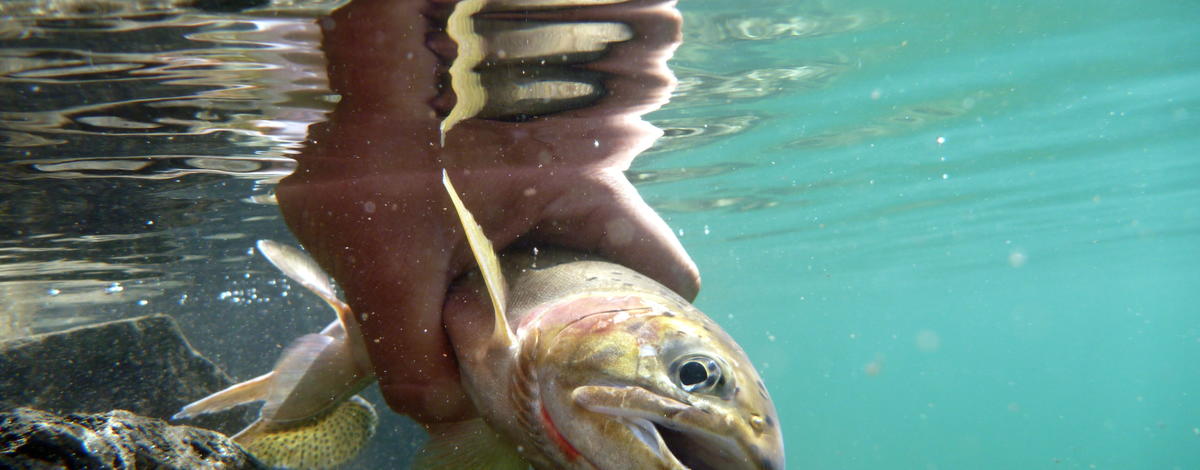Imagine standing on the shore of a sparkling mountain lake, or wading a cool, clear stream and casting to trout that devour a fly or lure like it’s an eating contest. Imagine the only competition might be an osprey perched in a tall tree or an otter bobbing in the current.
Sound farfetched? Not in Idaho’s backcountry, where anglers find solitude and great fishing every summer and have the opportunity to return and relive it year after year.
If you’re willing to stretch your legs to find great fishing spots, and you value exploration as part of your fishing experience, the backcountry beckons. There are hundreds of miles of lightly fished streams, hundreds of lightly fished lakes and drop-dead gorgeous scenery.
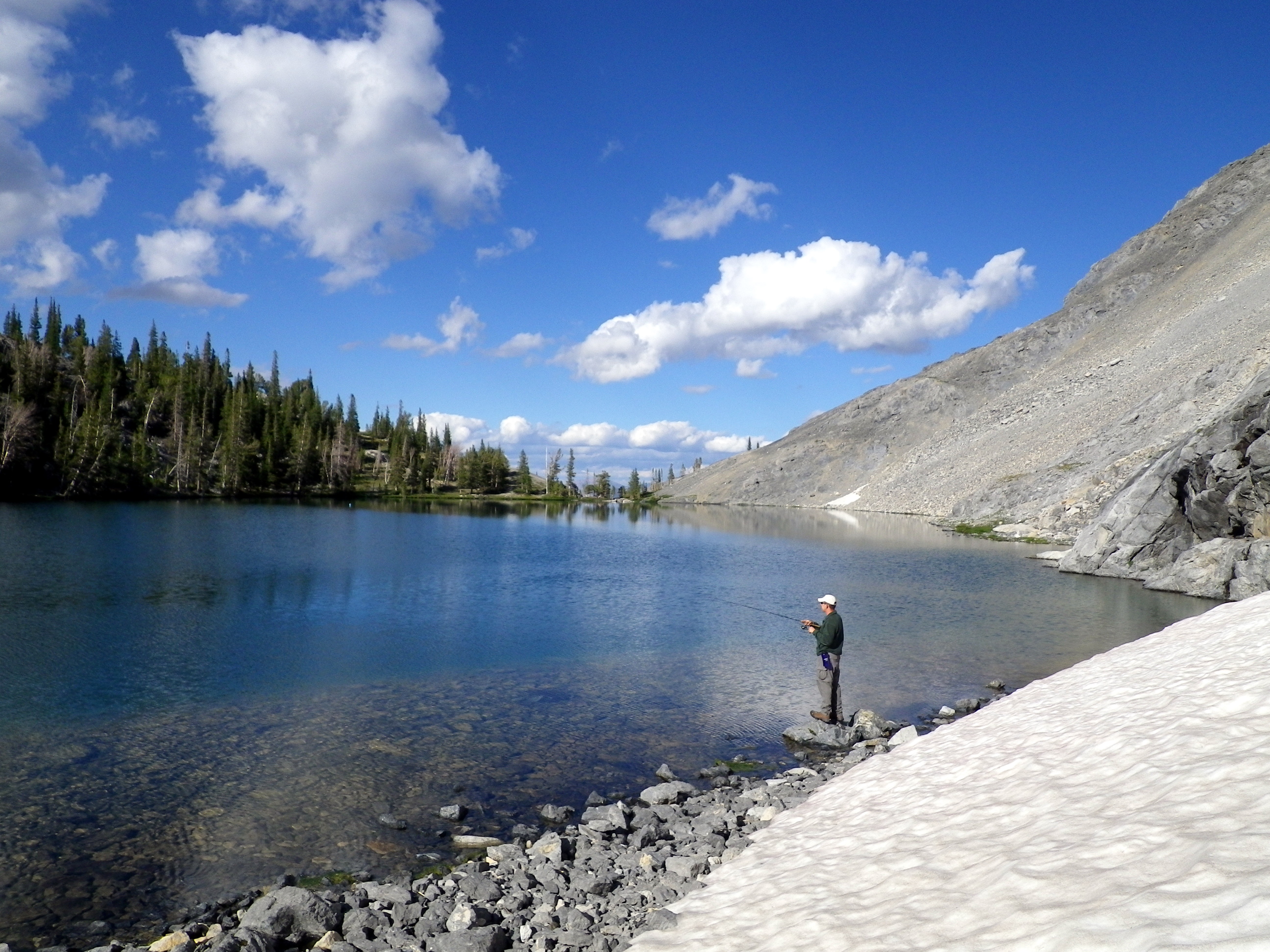
Figuring it out is part of the fun
You may be wondering “where are these places?” Identifying exactly where these prime spots are located defeats the purpose because you might see more people than you expect when you get there. Finding a great backcountry fishing spot will take a little homework and preparation on your part, and if we’re being completely honest, accepting that you might not find the perfect spot on the first try, which is what the exploration part is all about.
Idaho has thousands of square miles of backcountry, including 15 Congressionally designated wilderness areas spread across the state and 891 miles of federally designated “wild and scenic” rivers. Those are all good places to start your search for a backcountry fishing spot and a good chance for solitude. But there are millions more acres of public lands outside of wilderness areas that are also lightly used by anglers and have good fishing.
In the Internet age, finding a suitable place to fish is easier than you might expect, at least at first. Figure out the general location of where you’d like to explore and find satellite maps online. Forest Service and Bureau of Land Management maps are also good sources for information. Fish and Game’s Fishing Planner will show what fish are available in a certain body of water, and if it was recently stocked.
How to choose a mountain lake
Idaho’s mountains are filled with lakes, most of which have fish in them thanks to Fish and Game’s mountain lake stocking program. Every year, crews hike, pack in by horseback and fly in fingerling trout, which typically grow to catchable sizes within a few years.
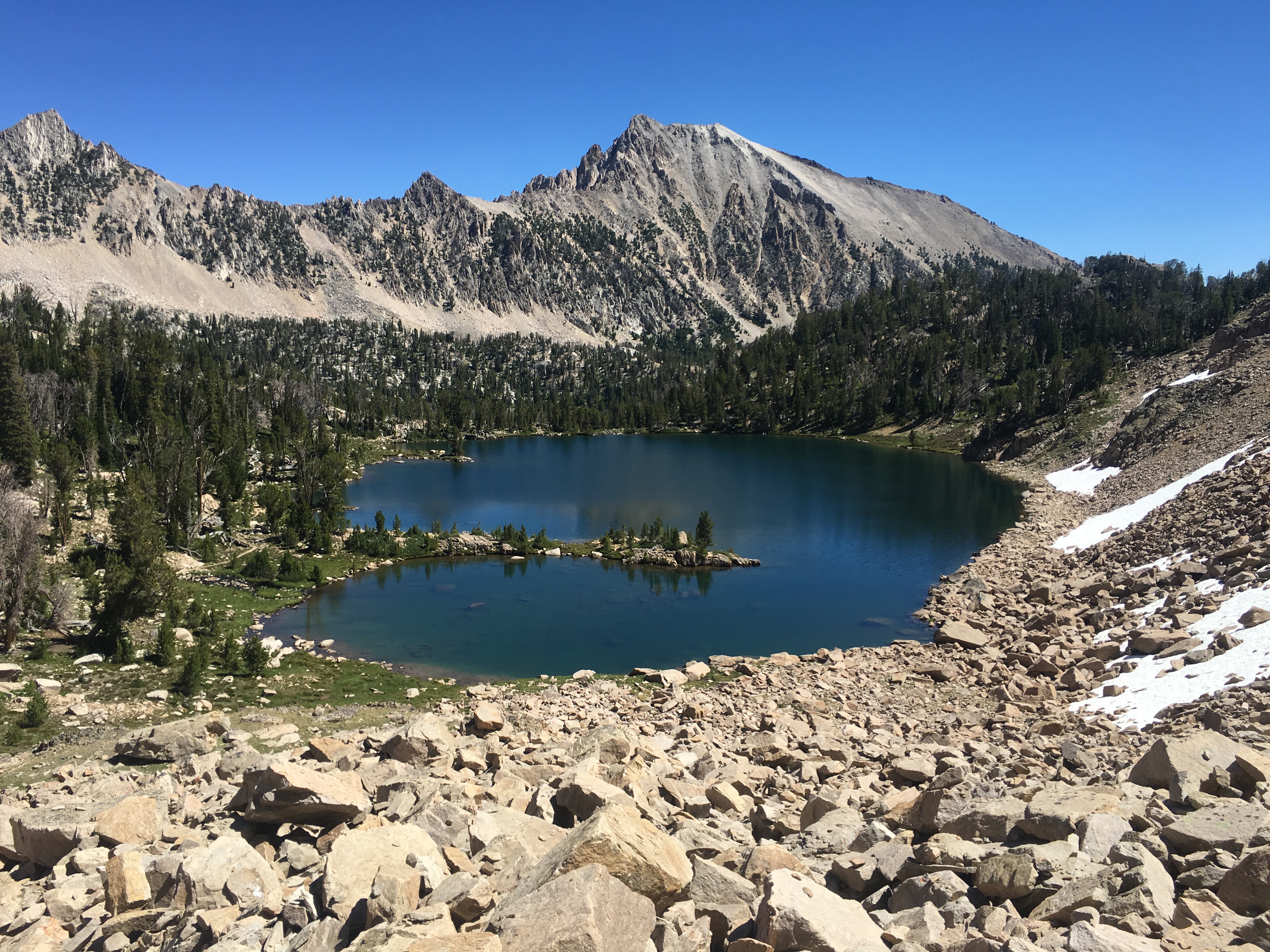
One thing to remember when choosing a destination is all mountain lakes are not created equal. Typically, a lake with inlet and outlet streams and shallow areas will be more productive than a deep lake in a high-elevation basin fed solely by snowmelt. That’s not always the case, and that's where exploration and a little luck come into play.
A good initial strategy is to find an area with a cluster of lakes, which is fairly common in Idaho’s mountains. If one lake isn’t producing good fishing, another is nearby. Don’t assume that hiking farther will improve your odds of catching more fish. Most mountain lakes don’t get heavy fishing pressure due to their remoteness and abundance, so don’t overlook a fairly accessible lake. Fishing there might be as good as one that’s several miles farther.
Don’t overlook backcountry lakes that are accessible by roads, either. Catchable-size trout are sometimes stocked in those lakes, and some mountain lakes also have naturally reproducing populations.
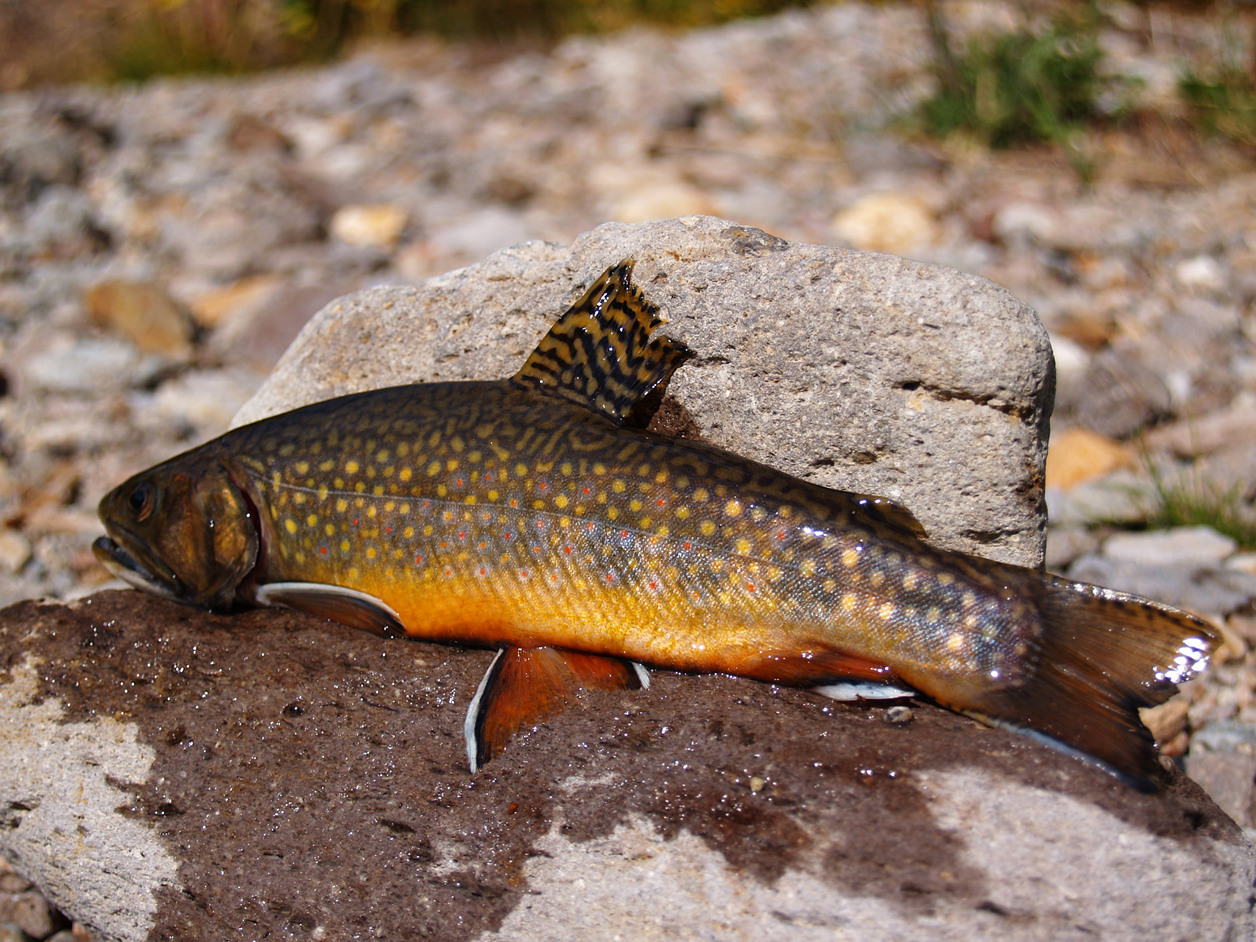
You will find mountain lakes that are populated with rainbow and cutthroat trout, as well as some that have brook trout, which tend to dominate when they’re present. Brook trout can provide lots of fishing action, and they can be a lot of fun to catch for young or new anglers. There’s typically a 25-fish bag limit for brook trout, but check the Fishing Seasons and Rules booklet because there are exceptions.
The trade off with brook trout is they can overpopulate mountain lakes, and while catch rates can be high, fish are likely to be small.
Finding backcountry streams
Finding rivers is easy. They’re well marked on any map, and most have a road leading to them at some point along their course. But finding a suitable place to fish in the backcountry may be more challenging. You might get to a river and find rapids, sheer rock walls, brushy shorelines and deep water that makes wading difficult.
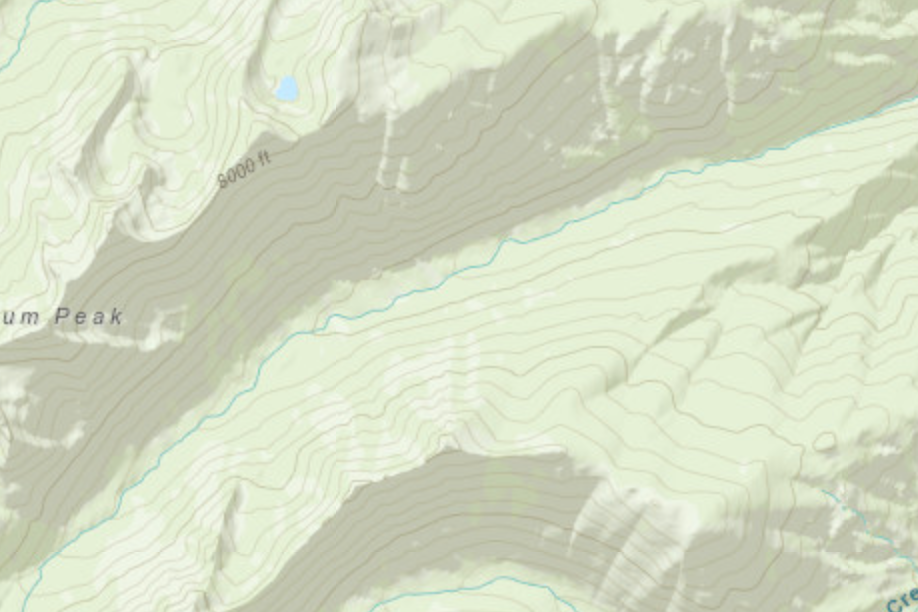
Steep topography can make fishing challenging.
When searching for places to fish, pay attention to the topographic lines on the map. You will probably want to avoid areas on the map with dense lines, which signify steep terrain. Look for more gentle terrain, and ideally one where the river has lots of meanders and channels, which often means it runs through a meadows or lowland.
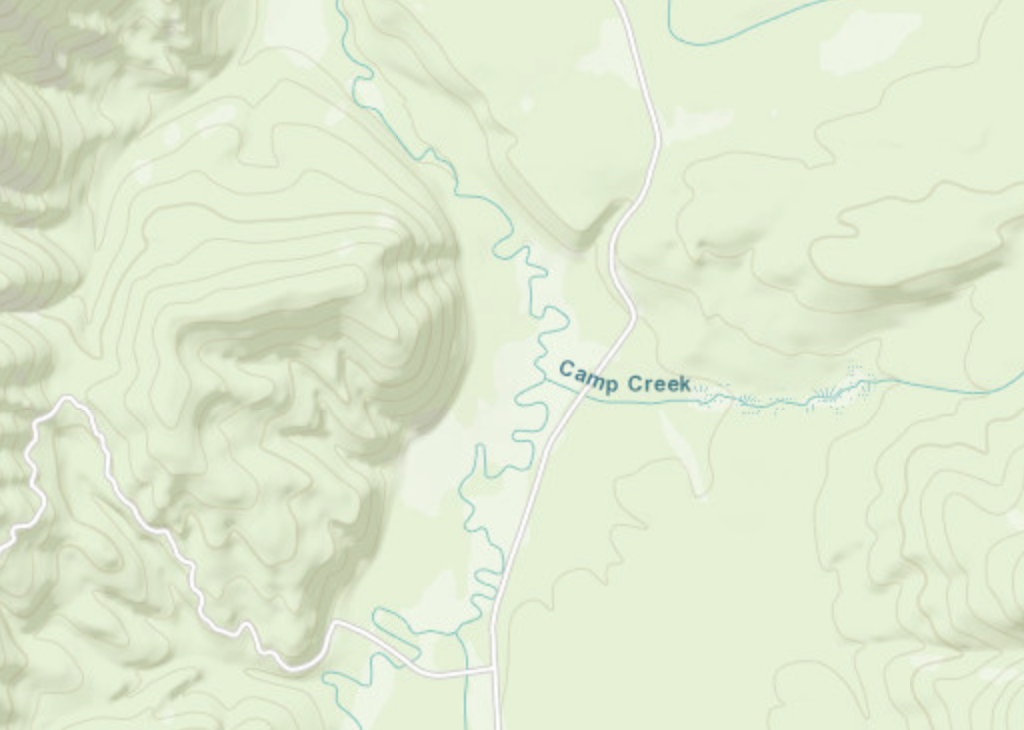
A meandering stream in flatter terrain is likely to have more fishing opportunity
Also pay attention to the flows. Lower water in late spring and through summer tends to make fishing spots more accessible, and fishing higher in the river system is usually better for wading. Don’t overlook tributary streams because even fairly small creeks can have good fishing, and are often filled with hungry, feisty trout.
Be sure to check the fishing rules because many wilderness and backcountry rivers and streams have limited harvest opportunities in order to protect wild, native trout.
Getting into the backcountry
Remember the backcountry is typically accessed via gravel and dirt roads, so be sure your vehicle is capable of navigating that terrain. Also remember road maintenance can be sporadic, and road closures are fairly common. Same goes for trails, so it’s best to call the land management agency in advance, or check the internet, for current road and trail conditions. If you’re planning to hike to high-elevation lakes, remember they can be blocked by snow as late July if a lot of snow fell during winter and spring weather remained fairly cool.
Finally, be prepared because the backcountry can be unforgiving and help is usually a long ways away. You will need to know how to safely navigate the backcountry on foot. Finding rivers is usually fairly easy, but finding backcountry lakes can be challenging, and you will want to be handy with a map and/or GPS.
Be sure to pack clothing for cold and wet weather, even during summer because thunderstorms are common and can drop the temperature by 20-30 degrees, and a warm, sunny day can turn cold and wet within minutes. Bring enough food and water to enjoy a day outdoors, and don’t forget other items, like sunscreen and bug repellent. Depending on the type of fishing you like to do, you might want to wear hiking boots and carry a pair of wading shoes with you to protect your feet during your hike and avoid hiking back out with wet shoes.
Don’t forget the basics of backcountry safety. Give yourself plenty of time to get there and back, let someone know where you’re going and when you expect to return.
But most important, have fun and savor the experience. The backcountry has some amazing fishing opportunities, but it’s the whole package of getting off the beaten path and plotting your own adventure that makes it special.

